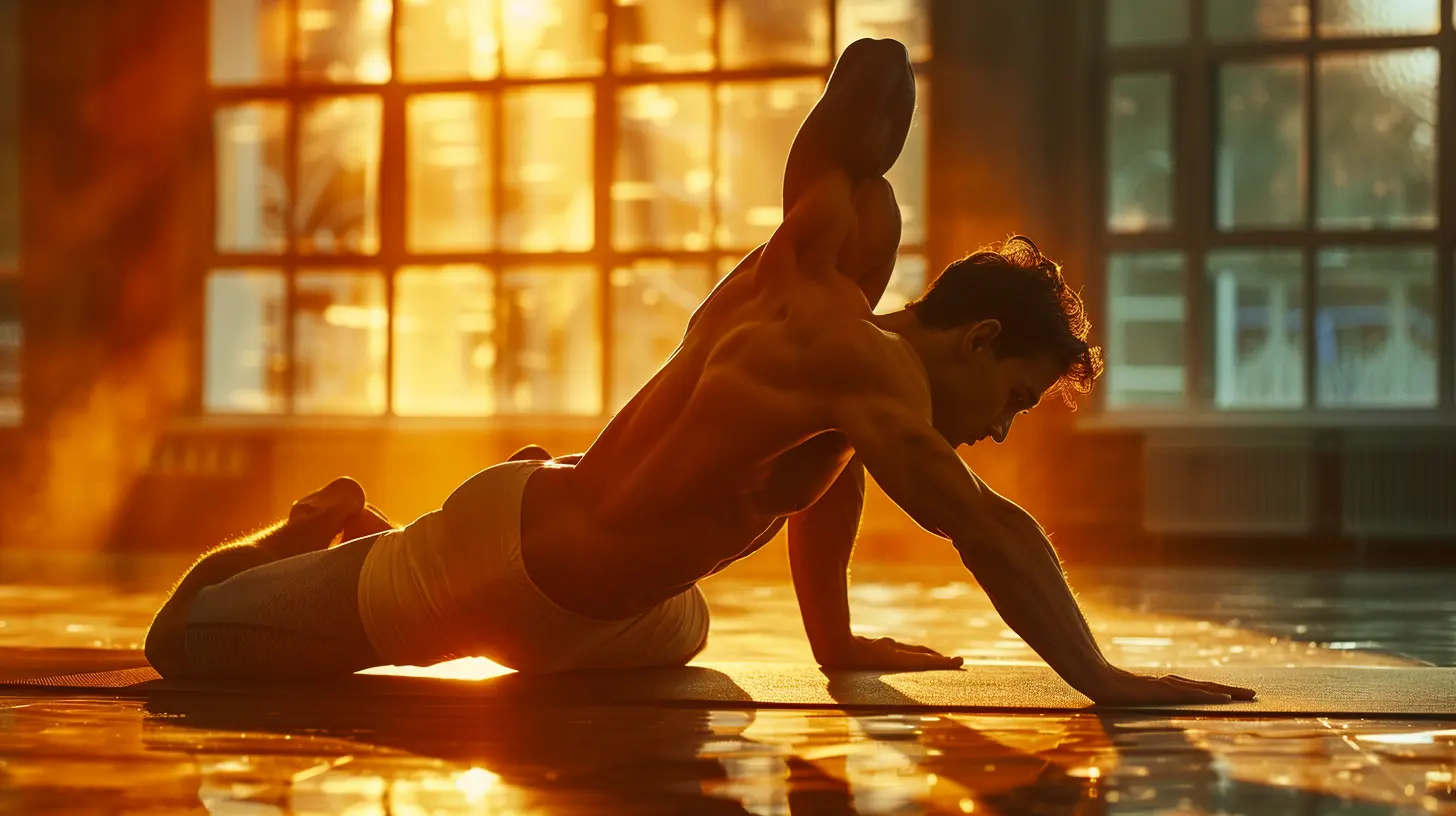Stretching for Triathletes: Balancing Strength, Endurance, and Flexibility
4 August 2025
Triathlons are no joke. Swimming, cycling, and running back-to-back push your body to its limits. But here’s the thing—if your muscles are tight and inflexible, you're setting yourself up for injuries, poor performance, and slower recovery.
Stretching is one of the most underrated aspects of triathlon training. It’s not just about staying limber—it’s about finding the perfect balance between strength, endurance, and flexibility. Let’s break it down and get you moving more freely, efficiently, and powerfully.

Why Stretching Matters for Triathletes
Think of your body as a high-performance machine. You wouldn’t drive a car with stiff, rusted joints, would you? The same goes for your muscles. Stretching keeps everything running smoothly by:- Improving flexibility – Looser muscles allow for a greater range of motion, which means better swimming strokes, more powerful pedal strokes, and a more efficient running stride.
- Enhancing performance – When your body moves efficiently, you expend less energy. This translates to better endurance and sustained power throughout a race.
- Preventing injuries – Tight muscles lead to imbalances, overcompensation, and strain. Stretching helps ward off common triathlete injuries like IT band syndrome, hamstring pulls, and lower back pain.
- Speeding up recovery – Sore after a brutal training session? Stretching reduces muscle stiffness and improves circulation, helping you bounce back faster.

Dynamic vs. Static Stretching: When and Why
Not all stretching is created equal. If you’ve ever stretched cold muscles before a workout, you might have felt stiff and awkward. That’s because dynamic stretching is the way to go before training, while static stretching is best for post-workout recovery.Dynamic Stretching (Pre-Workout)
Before diving into your swim or hitting the pavement, your muscles need to be warmed up and activated. Dynamic stretching involves controlled, repetitive movements that mimic the activity you’re about to do.Best Dynamic Stretches for Triathletes:
- Leg Swings – Loosen up your hips and hamstrings by swinging one leg forward and backward, then side to side.- Arm Circles – Get your shoulders ready for swimming with big, controlled circles.
- High Knees – A great way to engage your core and prep those running muscles.
- Lunges with a Twist – Opens up the hip flexors while also engaging your core and spine.
- Butt Kicks – Warms up your hamstrings and promotes good running mechanics.
Static Stretching (Post-Workout)
After training, your muscles are warm and pliable, making it an ideal time to lengthen them and improve flexibility. Static stretching involves holding a position for 20-30 seconds.Best Static Stretches for Triathletes:
- Hip Flexor Stretch – Crucial for cyclists and runners who spend hours with bent hips.- Hamstring Stretch – Helps prevent tightness that can affect both running and cycling performance.
- Quadriceps Stretch – Maintains knee health and avoids overuse injuries.
- Lower Back Stretch – Reduces strain and stiffness, especially important for triathletes with tight lower backs.
- Calf Stretch – Running and cycling put heavy stress on the calves, making this essential.

How Flexibility Balances Strength and Endurance
You might be thinking, “I need strength and endurance, but why should I prioritize flexibility?” Here's the deal—without flexibility, your strength and endurance suffer.1. Swimming efficiency improves – A more flexible body moves through the water with less resistance. Tight shoulders and a stiff torso make it harder to rotate properly.
2. Cycling power increases – Tight hip flexors and quads reduce the power you generate with each pedal stroke, forcing you to work harder than necessary.
3. Running stride becomes smoother – If your hamstrings, calves, and hip flexors are tight, your stride shortens, leading to inefficiency and fatigue.
The Strength-Flexibility Trade-Off
Some athletes worry that too much stretching can make their muscles weaker. While excessive flexibility without strength can be problematic, a well-balanced routine enhances performance. You need strong, yet pliable muscles that generate power while allowing smooth movement.
Common Stretching Mistakes Triathletes Should Avoid
Even with the best intentions, many triathletes make stretching mistakes that can do more harm than good.1. Stretching Cold Muscles
Stretching before warming up is like trying to bend a frozen rubber band—it’s stiff and more likely to snap. Always do dynamic movements before static stretching.2. Skipping Stretching on Busy Days
We get it, you’re clocking in hours of training, and stretching feels like an afterthought. But skipping it regularly leads to stiffness and increased injury risk. Make it part of your routine, even if it’s just 5-10 minutes.3. Forcing Stretches Too Hard
Stretching should never be painful. If you push too hard, your muscles may tighten up as a protective response. The key is gentle, sustained movements over time.4. Ignoring Key Muscle Groups
Many triathletes stretch only their hamstrings and calves, neglecting crucial areas like the hip flexors, lower back, and shoulders. A full-body approach is essential for optimal performance.5. Not Holding Stretches Long Enough
Quick 5-second stretches won’t give your muscles enough time to relax and lengthen. Hold each static stretch for at least 20-30 seconds to get real benefits.Incorporating Stretching Into Your Triathlon Training
The best way to make stretching a habit? Link it to your workouts.- Before training – Spend 5-10 minutes doing dynamic movements to get your body primed.
- After training – Dedicate 10-15 minutes to static stretching while your muscles are still warm.
- On rest days – Light stretching or yoga can aid recovery and improve long-term flexibility.
Bonus: Foam Rolling for Extra Flexibility
Foam rolling isn’t exactly stretching, but it works hand-in-hand with it. It helps break up tight muscle knots, increases blood flow, and enhances mobility. Use a foam roller on your quads, hamstrings, calves, and back for the best results.
Final Thoughts
As a triathlete, you’re constantly chasing speed, endurance, and strength. But don’t overlook flexibility—it’s the glue that holds everything together. Stretching helps you move more efficiently, prevent injuries, and recover faster.Make it a non-negotiable part of your routine. Your body—and your race times—will thank you.
all images in this post were generated using AI tools
Category:
StretchingAuthor:

Nelson Bryant
Discussion
rate this article
1 comments
Thor Riggs
Effective stretching enhances recovery and performance, crucial for triathletes seeking harmony between strength, endurance, and flexibility.
August 22, 2025 at 12:36 PM

Nelson Bryant
Thank you for your insightful comment! I completely agree—effective stretching is essential for triathletes to optimize their overall performance and recovery.


